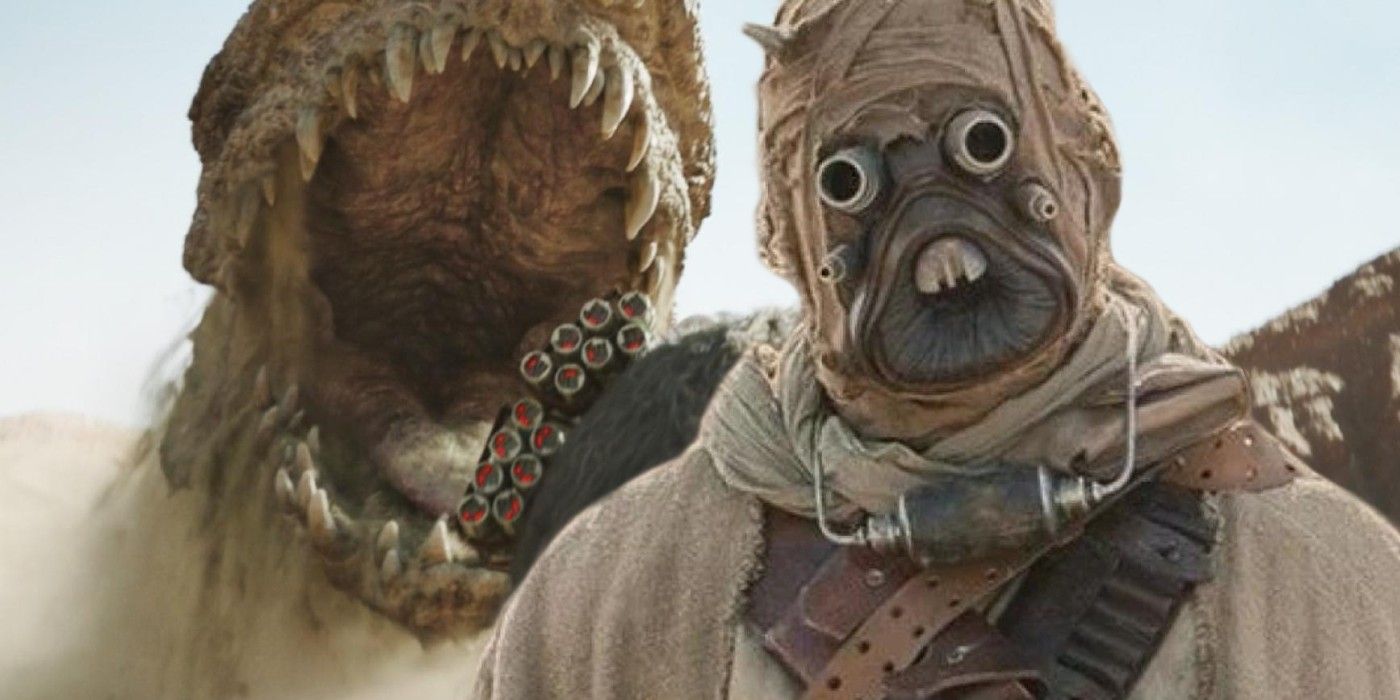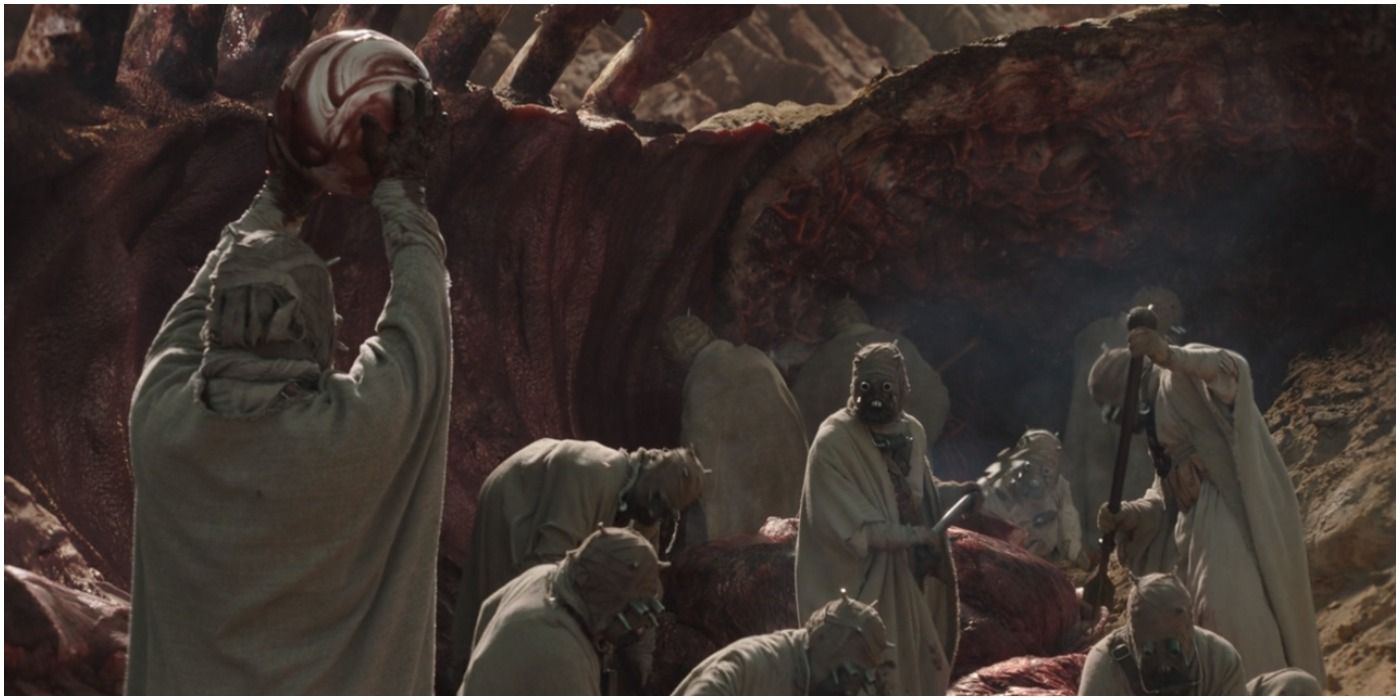The Mandalorian season 2 reveals a key similarity between two prominent residents of Tatooine. Din Djarin and Baby Yoda recently made their long-awaited return to Disney+, and "The Marshal" certainly lived up to expectations, with the same brand of western-tinged, visually stunning Star Wars adventure that made The Mandalorian season 1 such a resounding success. "The Marshal" brings Mando to the town of Mos Pelgo where he meets Cobb Vanth, a sheriff using Boba Fett's salvaged armor to protect the townsfolk. In exchange for Boba's gear, Mando agrees to take down the Krayt dragon terrorizing Mos Pelgo, and the unlikely pair enter into an alliance with the local Tusken Raiders for the mission.
"The Marshal" borrows essentially the same structure as The Mandalorian season 1's "The Child." The second episode of the series, Mando and a freshly-unearthed Baby Yoda find the Razor Crest being stripped by Jawas. To win back the scavenged parts, Djarin strikes a deal to fight the fearsome Mudhorn on the Jawas' behalf - a feat he only accomplishes thanks to the Force powers of his small, green companion. As in The Mandalorian's season 2 premiere, Din Djarin defeats a giant monster in conjunction with a famous Star Wars alien race, earning the right to continue on his path.
However, there's an even more fascinating parallel between "The Marshal" and "The Child" and, more specifically, between the respective cultures of the Tusken Raiders and Jawas. Back in The Mandalorian season 1, the Jawas quested Din Djarin kill the Mudhorn to get their little hands on the creature's egg. The Jawas of Arvala-7 treat the Mudhorn egg with an almost mystic reverence, and consume the treasure as their highest delicacy. Although not as prominent, the Tusken Raiders have a similar motivation for wanting the Krayt dragon dead. Like the residents of Mos Pelgo, Tatooine's Tusken Raiders are sick of losing their kind (and their banthas) to the greedy dragon, but during negotiations with Mando and Vanth, assertively stake their claim to the beast's carcass. Naturally, the townsfolk and their Mandalorian partner have no qualms with this (although it seems Baby Yoda was partial to a bit of Krayt meat), but there's method to the Sand People's madness.
Although it's an easy moment to miss, the aftermath of the Krayt dragon battle reveals that the Tusken Raiders were hoping to score a valuable pearl from the creature's stomach. When the corpse is being dissected and Mando is loading Boba Fett's armor onto his speeder, a group of Tuskens cut the pearl free and begin celebrating wildly like they've won the jackpot of animal cuttings. There's no in-dialogue acknowledgement of the pearl, and it's easy to mistake the lucrative stone for another egg, similar to the Mudhorn from season 1, but this is clearly why the Tusken Raiders were so keen to help. The pearls of the Krayt dragon have been referenced previously in Star Wars video games and novels, and are formed of kyber crystals, explaining their immense value.
The Krayt pearl scene completes the mirror-image between The Mandalorian's Jawas and the Tusken Raiders. Both episodes wildly expand the mythology of the two races, and lusting for treasure within the belly of a great beast is apparently part of both cultures. On the surface, it might seem as if The Mandalorian is recycling its own ideas, or trying to imply that all Star Wars races are motivated by greed on some level. Instead, the Jawas' Mudhorn egg and the Tusken Raiders' Krayt dragon pearl connect to Din Djarin's status as a bounty hunter. Although he may no longer be a member of the Bounty Hunter's Guild, accepting missions for cold hard cash, Mando is still performing the function of a bounty hunter, albeit now for a more wholesome purpose.


